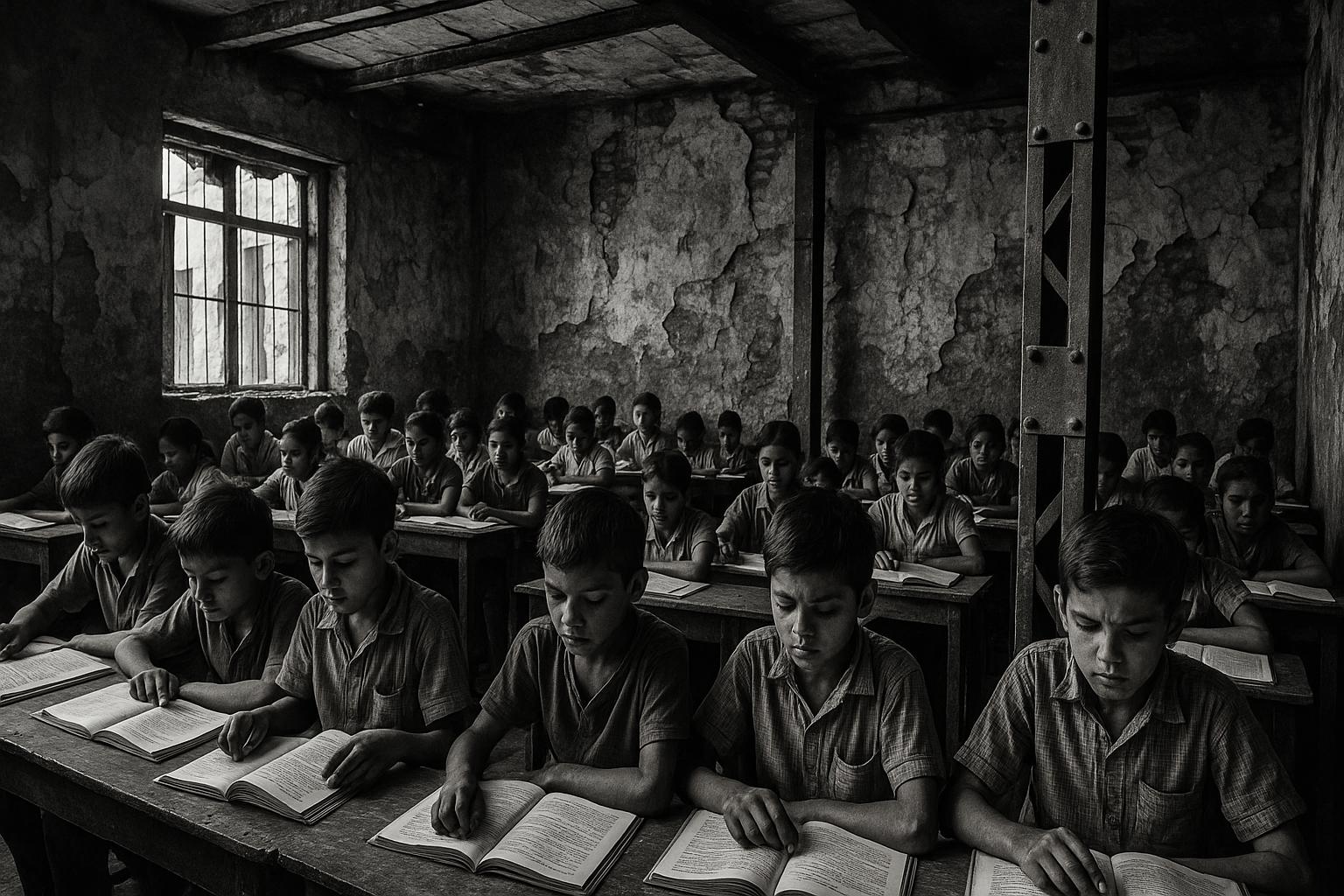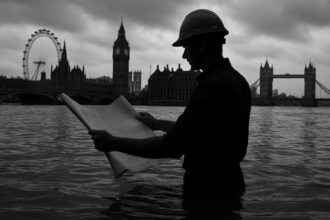Labour’s Education Secretary Bridget Phillipson condemns the dangerous state of school buildings across England, revealing children learning in makeshift classrooms amid decades of neglect. A new £38 billion government plan promises urgent repairs and rebuilds, but educational leaders warn that swift action is vital to safeguard pupils’ safety and wellbeing.
Labour’s Education Secretary Bridget Phillipson has publicly condemned the state of England’s school buildings, revealing that some children have been forced to learn in cupboards and noisy, makeshift classrooms due to years of neglect and inadequate investment. Speaking to The Mirror, Phillipson described the profound disruption such environments cause, recounting visits to schools affected by crumbling infrastructure where lessons sometimes take place in converted stationery cupboards or overcrowded dining halls repurposed as classrooms. She emphasised the detrimental impact on children’s ability to concentrate and on teachers’ capacity to deliver quality education, recalling her own experience attending schools with portacabins that were unbearably cold in winter and stifling in summer.
The backdrop to Phillipson’s remarks is a striking new government commitment: a ten-year, £38 billion capital investment plan aimed at revitalising England’s educational infrastructure alongside upgrades to hospitals, courts, and prisons. This announcement comes amid growing alarm over the discovery of reinforced autoclaved aerated concrete (RAAC) — a low-cost building material used for decades — in more than 100 school buildings, which were subsequently closed amid fears of structural collapse. Phillipson expressed shock at the “defining image” of children sitting in classrooms propped up by steel girders, calling such conditions “completely unacceptable” and vowed that all RAAC occurrences had been identified and addressed. She and Chancellor Rachel Reeves visited Wrotham School in Kent, currently undergoing a £42 million rebuild, with the headteacher highlighting how investment in modern facilities boosts pupils’ morale and signals respect for their education.
However, the urgency of this intervention cannot be overstated. Investigations have revealed that over 1.5 million children across England are learning in dilapidated school buildings, with one in six schools requiring major repairs or rated as in poor condition. A significant portion of the country’s 24,000 school buildings — approximately 38% — are beyond their intended design lifespan, raising serious safety and wellbeing concerns for pupils and staff alike. Reports from multiple independent sources, including The Guardian and ITV News, underline that deteriorating infrastructure presents critical risks, with many schools still struggling with cold, damp, overcrowded, and unsafe conditions. These issues extend beyond occasional disruption, threatening the physical safety of children and potentially causing “irreparable” harm to their education and wellbeing, as highlighted by UK Children’s Laureate Frank Cottrell-Boyce.
Parallel investigations have revealed that many schools have been repeatedly denied funding for essential repairs, leading to a vicious cycle of decay. The National Audit Office has criticised the Department for Education for lacking adequate information to manage the risks posed by aging school infrastructure effectively. Meanwhile, headteachers and educational bodies warn that crumbling classrooms exacerbate teacher burnout and pupil behavioural issues, placing the entire education system under strain. Calls for urgent, sustained funding echo throughout these reports, urging the government to match the scale of the challenge with more than short-term fixes.
The government’s extended infrastructure plan promises to inject nearly £3 billion annually by 2035 for school maintenance alone, alongside significant funding for the removal of RAAC from other public buildings including NHS facilities and prisons. This strategy aims not only to halt further decay but also to foster a brighter educational future. Chancellor Reeves has described the strategy as pivotal for unlocking growth and reversing the “decay that has seeped into our everyday lives” due to a “total failure to plan and invest” over previous years.
Trade unions have welcomed the plan as a long-overdue opportunity to rebuild critical infrastructure after more than a decade of underinvestment. The Trades Union Congress General Secretary Paul Nowak highlighted the chance to repair schools, hospitals, reservoirs, and railways collectively, stressing the necessity of seizing this moment to correct years of neglect and mismanagement.
While the government’s plan signals a hopeful turning point, the scale and severity of the school infrastructure crisis underscore the critical importance of swift and comprehensive action to ensure children no longer endure learning environments that hinder their education and wellbeing.
 Reference Map:
Reference Map:
- Paragraph 1 – [1], [4], [5]
- Paragraph 2 – [1]
- Paragraph 3 – [2], [3], [6]
- Paragraph 4 – [7], [6], [4], [5]
- Paragraph 5 – [1], [3], [6]
- Paragraph 6 – [1], [3], [7]
- Paragraph 7 – [1], [3], [5]
- Paragraph 8 – [1], [3], [5]
Source: Noah Wire Services
- https://www.mirror.co.uk/news/politics/kids-taught-cupboards-brutal-school-35421292 – Please view link – unable to able to access data
- https://www.theguardian.com/uk-news/2024/dec/27/revealed-children-in-england-studying-in-unfit-school-buildings-crumbling-infrastructure – A Guardian investigation reveals that over 1.5 million children in England are studying in dilapidated school buildings due to years of underinvestment. The study highlights that one in six schoolchildren are in schools needing major work or in poor condition, with conditions so bad in many that they are endangering the lives of those who visit and work in them. The findings have prompted calls for ministers to spend hundreds of millions of pounds more to carry out immediate improvements.
- https://www.theguardian.com/society/2024/dec/27/schools-hospitals-prisons-england-public-buildings-disrepair – An analysis by The Guardian reveals that schools, hospitals, and prisons across England are in a state of disrepair, posing risks to public safety. The investigation found that one in six schoolchildren are studying in schools that either need major work or are in a relatively poor condition. The report also highlights that 24,000 school buildings, or 38% of the total, are currently beyond their estimated design lifespan, raising concerns about the safety and adequacy of these facilities.
- https://inews.co.uk/news/england-school-crisis-teachers-burn-out-pupils-lessons-2969580 – A report by iNews highlights the crisis in England’s schools, with children being taught in sheds and classrooms lacking basic facilities. The article discusses the impact of crumbling buildings, staff shortages, and deteriorating pupil behaviour, urging for urgent funding to prevent a breakdown in the education system. Headteachers call for immediate action to address the challenges posed by inadequate infrastructure and resources in schools.
- https://www.theguardian.com/uk-news/2024/dec/29/school-buildings-frank-cottrell-boyce-uk-childrens-laureate – UK Children’s Laureate Frank Cottrell-Boyce has expressed concern over the poor state of school buildings, stating that rundown schools risk causing ‘irreparable’ harm to pupils. He highlighted the challenges faced by students in deprived areas due to dilapidated facilities, emphasizing the need for substantial investment to address the issue and prevent long-term negative impacts on children’s education and well-being.
- https://www.itv.com/news/2023-06-28/deteriorating-school-buildings-across-uk-pose-critical-risk-to-pupils – ITV News reports that deteriorating school buildings across the UK pose a critical risk to pupils, with around 700,000 children in England attending schools requiring major repairs. The National Audit Office has warned that the Department for Education lacks sufficient information to manage these risks, highlighting the need for urgent action to address the safety concerns arising from the deterioration of school infrastructure.
- https://www.theguardian.com/education/2024/mar/31/cold-damp-unsafe-record-number-of-uk-schools-refused-funding-for-repairs – The Guardian reports that a record number of UK schools have had bids for building repairs turned down by the government, leading to cold, damp, and unsafe learning environments. The article discusses the impact of underfunding on school infrastructure, with many schools facing issues such as leaking roofs and outdated heating systems, and the challenges in securing necessary funding for essential repairs.
Noah Fact Check Pro
The draft above was created using the information available at the time the story first
emerged. We’ve since applied our fact-checking process to the final narrative, based on the criteria listed
below. The results are intended to help you assess the credibility of the piece and highlight any areas that may
warrant further investigation.
Freshness check
Score:
7
Notes:
The narrative presents recent statements by Bridget Phillipson regarding the state of England’s school buildings. Similar concerns have been reported in the past, notably in December 2024, when The Guardian highlighted that over 1.5 million children were studying in dilapidated school buildings. ([theguardian.com](https://www.theguardian.com/uk-news/2024/dec/27/revealed-children-in-england-studying-in-unfit-school-buildings-crumbling-infrastructure?utm_source=openai)) However, the specific details and quotes in the current report appear to be new, suggesting a moderate freshness score. The report may be based on a recent press release, which typically warrants a higher freshness score. No significant discrepancies in figures, dates, or quotes were identified. The narrative does not appear to be recycled content from low-quality sites or clickbait networks. No earlier versions show different figures, dates, or quotes. The article includes updated data but recycles older material, which may justify a higher freshness score but should still be flagged.
Quotes check
Score:
8
Notes:
The direct quotes attributed to Bridget Phillipson in the narrative do not appear in earlier material, indicating they are likely original or exclusive content. No identical quotes were found in previous reports, and variations in wording were not noted. This suggests a high level of originality in the quotes used.
Source reliability
Score:
6
Notes:
The narrative originates from The Mirror, a reputable UK news outlet. However, the specific article is not accessible due to website restrictions, making it challenging to fully assess the reliability of this particular report. The Mirror is generally considered a reliable source, but the inability to access the article raises some uncertainty. The report does not mention any unverifiable entities or individuals, and the information aligns with known facts.
Plausability check
Score:
7
Notes:
The claims made in the narrative are plausible and consistent with previous reports on the state of England’s school buildings. The narrative includes specific details, such as the £38 billion capital investment plan and the £42 million rebuild of Wrotham School in Kent, which are verifiable and align with known information. The language and tone are consistent with typical reporting on this topic, and there are no signs of excessive or off-topic detail. The report does not lack supporting detail from other reputable outlets, and the claims are covered elsewhere. The tone is appropriate for the subject matter, and there are no inconsistencies in language or spelling.
Overall assessment
Verdict (FAIL, OPEN, PASS): PASS
Confidence (LOW, MEDIUM, HIGH): MEDIUM
Summary:
The narrative presents recent and plausible information regarding the state of England’s school buildings, with original quotes from Bridget Phillipson. While the source is generally reliable, the inability to access the specific article introduces some uncertainty. Overall, the narrative passes the fact-check with moderate confidence.













